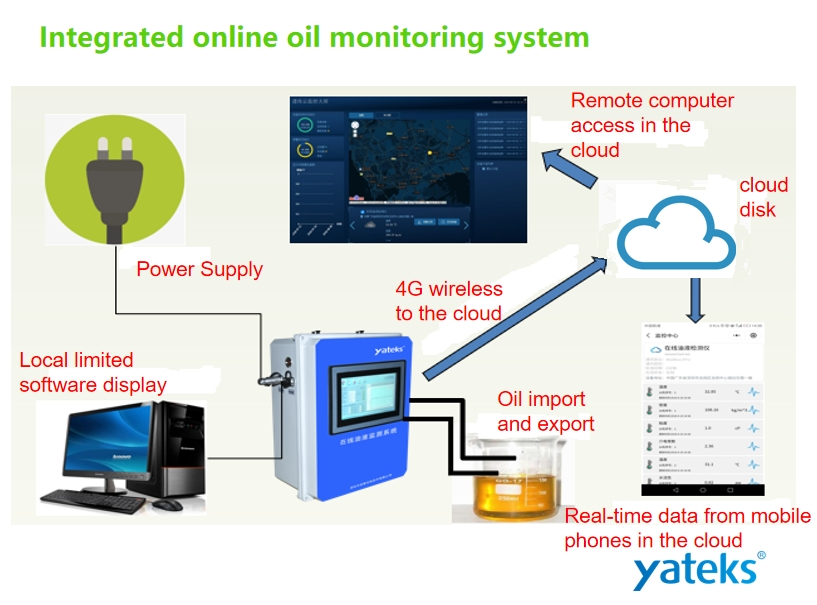Transformer oil, also known as insulating oil and electrical oil, is a fractionated product of petroleum. It is a light yellow transparent liquid. It is a special oil for power transmission and transformation equipment, including transformers, transformers, switchgear, rectifiers, cables, and capacitors. It mainly includes four types of oils: transformer oil, oil switch oil (circuit breaker oil), capacitor oil and cable oil. This type of oil can be used alone or together with solid insulating materials, both as an electrical insulation medium and as a heat conduction medium for conducting electrical equipment, mainly for cooling and insulation. In electrical appliances or power transmission equipment, in addition to transformer oil, other varieties are usually used in small amounts. Transformer oil is widely used in equipment such as transformers and circuit breakers, mainly for insulation, heat dissipation and arc suppression.
Significance of Transformer Oil Testing Project
- Appearance: Inspect the appearance of the running oil, you can find the presence of insoluble sludge, fiber and dirt in the oil. In routine tests, there should be a record of this item.
- Color: The new transformer oil is generally colorless or light yellow, and the color will gradually deepen during operation, but this trend of change is relatively slow under normal circumstances. If the color of the oil deepens rapidly, investigate whether the equipment is overloaded or overheated. If other relevant characteristic test items meet the requirements, the operation can be continued, but the monitoring should be strengthened.
- Water-soluble acid (PH value): Transformer oil is generally easy to generate low-molecular organic acids, such as formic acid, acetic acid, etc., in the primary stage of oxidation, because these acids have better water solubility. When the water-soluble acid content in the oil increases (ie pH When the oil contains water, it will corrode solid insulating materials and metals, reduce the insulation performance of electrical equipment, and shorten the service life of the equipment.
- Acid value: The acidic products contained in the oil will increase the conductivity of the oil and reduce the insulation performance of the oil. When the operating temperature is high (such as above 80°C), it will also promote the aging and corrosion of the solid fibrous insulating material. Shorten the service life of the equipment. Since the acid value in the oil can reflect the aging of the oil, strengthening the supervision of the acid value is very important for taking correct maintenance measures.
- Flash point (closed): The flash point is an essential item for the supervision of operating oil. Reduced flash point means that volatile combustible gases are produced in the oil; these combustible gases are often generated by the partial overheating of electrical equipment and the thermal cracking of insulating oil at high temperatures caused by arc discharge. The failure of the equipment can be found in time through the determination of the flash point. At the same time, for the newly charged equipment and the transformer oil after the overhaul, measuring the flash point can also prevent or discover whether the light distillate oil is mixed in, so as to ensure the safe operation of the equipment
- Moisture (minor amount): Moisture is one of the important reasons that affect the insulation aging of transformer equipment. The increase of water content in transformer oil and insulating materials directly leads to a decline in insulation performance and promotes oil aging, which affects the reliability and service life of equipment operation. Strict supervision of moisture is an indispensable test item to ensure the safe operation of equipment
- Interfacial tension: The measurement of the interfacial tension between oil and water is an indirect and effective method to check the soluble polar impurities caused by aging in the oil. In the initial aging stage of oil, the change of interfacial tension is quite rapid, and in the middle of aging, the rate of change is also reduced. The generation of sludge has increased significantly. Therefore, this method can also make a reliable judgment on the tendency of sludge generation.
- Dielectric loss factor: Dielectric loss factor is very sensitive to judging the aging and pollution degree of transformer oil. The new oil contains few polar impurities, so the dielectric loss factor is also very small, generally only 0.01% to 0.1%; but when the oil is aging due to oxidation or overheating, or when other impurities are mixed, it is generated As polar impurities and charged colloidal substances gradually increase, the dielectric loss factor will also increase. When the oil aging products are so small that they cannot be detected by chemical methods, the dielectric loss factor can be clearly distinguished. Therefore, the measurement of the dielectric loss factor is a common method for transformer oil inspection and supervision, which has special significance.
- Breakdown voltage: The breakdown voltage of transformer oil is a very important monitoring method to test the resistance of the transformer oil to the ultimate electrical stress. Under normal circumstances, it mainly depends on the degree of contamination, but when the oil contains moisture When it is higher or contains impurity particles, it has a greater impact on the breakdown voltage
- Volume resistivity: The volume resistivity of the transformer oil is the same as the dielectric loss factor, which can determine the degree of aging and pollution of the transformer oil. Moisture in the oil, pollution impurities and acid products can all affect the reduction of resistivity.
- Dissolved gas component content (chromatographic analysis): The power industry analyzes the specific gas of transformer oil (such as CO2, CO, H2, C2H2, etc.) to infer the cause of transformer failure. Therefore, transformer manufacturers treat dissolved gas as entering the factory Transformer oil internal control items to detect.
- Sludge and sediment: This method is to check the sludge sediment that can be precipitated from the oil when n-heptane is added in the running oil while it is still in a dissolved or colloidal state. Because the solubility of sludge in new oil and aging oil is different, when new oil penetrates into aging oil, sludge will precipitate out. The deposition of sludge will affect the heat dissipation performance of the equipment, and it will also cause serious damage to solid insulating materials and metals. The corrosion caused by the insulation performance is reduced, which is more harmful. Therefore, when the ratio of oil is greater than 5%, the sludge precipitation test must be carried out.
- Copper content: Most of the parts in the transformer are made of copper metal. Abnormal copper content in the oil is the main reason for the increase in oil dielectric loss and the decrease in insulation resistance.
- Graininess in the oil: Transformers have strict requirements on the pollutants of transformer oil. Particles >5μm require no more than 3000 old oil, and no more than 2000 new oil.
- Analysis of furfural content in insulating oil: The power industry regards furfural content as a sign of whether the transformer insulation paper is explained during operation.


